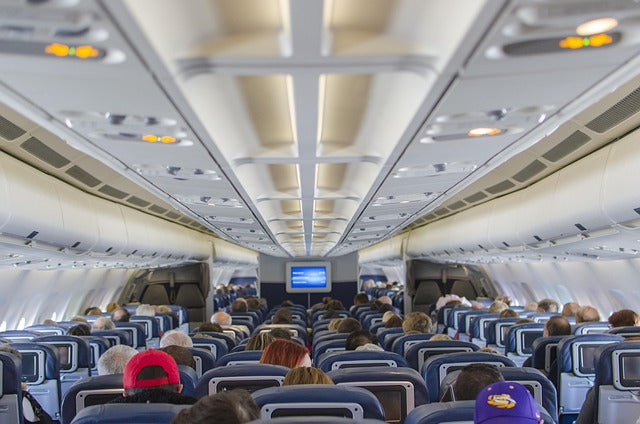
Introduction
Air travel is one of the safest modes of transportation, but passengers often wonder: where is the safest place to sit on a plane? This question has been the subject of numerous studies, data analyses, and even personal preferences from frequent travelers, including sports agents and executives who prioritize safety during flights.
With recent aviation incidents, such as the small plane crash in Fullerton, California, safety concerns have resurfaced. This article examines historical crash data, expert opinions, and statistics to determine which airplane seats offer the highest chances of survival in an emergency.
1. What Does the Data Say About Safe Airplane Seats?
1.1 Analyzing Past Airplane Accidents
According to a study conducted by the Federal Aviation Administration (FAA) and the National Transportation Safety Board (NTSB), seat location plays a role in survival rates during an accident. A comprehensive study of past commercial airline crashes found:
-
Rear Seats: Passengers seated in the rear of the plane have a higher survival rate, averaging around 69%, compared to other sections of the aircraft.
-
Middle Section: The center of the plane (especially near the wings) is considered less safe, with survival rates averaging 56%.
-
Front Section: Passengers in the front, including first-class seating, tend to have lower survival rates, averaging 49%.
-
Exit Row Seats: Passengers near emergency exits are more likely to evacuate quickly, increasing their chances of survival.
1.2 Survivability Factors in a Crash
Several factors influence survival in an airplane crash beyond just seat location:
-
The nature of the crash (impact force, fire, landing conditions)
-
Accessibility to emergency exits
-
Wearing seatbelts correctly
-
The effectiveness of crew instructions and passenger compliance
2. Why Are Seats Near the Exit Considered Safer?
Many frequent travelers, including sports agents and VIP clients, prefer sitting near emergency exits. Here’s why:
-
Faster Evacuation: Exit row seats provide quicker access to emergency exits, reducing escape time.
-
Less Congestion: Being close to an exit means avoiding crowded aisles during an emergency.
-
Stronger Seat Reinforcement: Exit row seats are designed with more robust structural support.
However, these seats also come with restrictions:
-
Passengers must be physically capable of assisting in an evacuation.
-
Seats may not recline fully.
-
Some airlines charge extra for these preferred seats.
3. Case Studies: Lessons from Past Plane Crashes
3.1 American Airlines Flight 96 (1972)
A cargo door failure caused a rapid decompression, but passengers seated toward the rear had more time to adjust to the emergency and evacuate successfully.
3.2 The Hudson River Landing (2009)
US Airways Flight 1549, known as the "Miracle on the Hudson," successfully ditched in water with zero fatalities. Passengers seated near emergency exits had a clear path to escape, highlighting the importance of seat location.
3.3 Recent Fullerton, California Plane Crash (2025)
A small plane crashed into a warehouse, killing two people and injuring 19. Investigations revealed that modifications to the aircraft’s doors contributed to the accident. This raises concerns about structural integrity and safety in smaller aircraft.
4. How to Maximize Safety During Air Travel
4.1 Pre-Flight Seat Selection
-
Choose rear or exit row seats for a better survival chance.
-
Avoid seats directly over the wings, where fuel tanks are located.
-
Consider booking a seat near a secondary exit if available.
4.2 Safety Tips While Flying
-
Always keep your seatbelt fastened, even when seated.
-
Familiarize yourself with emergency exit locations.
-
Pay close attention to pre-flight safety briefings.
4.3 Importance of Following Airline Safety Regulations
Many aviation accidents highlight the importance of following airline regulations. Ignoring safety protocols, such as not securing the cabin door (as seen in the Fullerton crash), can have fatal consequences.
5. Future of Airplane Safety
With advancements in technology, air travel is becoming even safer. Key developments include:
-
AI-Powered Flight Monitoring: Predicting mechanical failures before they occur.
-
Stronger Aircraft Materials: Using composite materials to reinforce structural integrity.
-
Better Evacuation Procedures: Enhancing crew training for emergency scenarios.
Conclusion
While no seat on an airplane guarantees 100% safety, statistical analysis shows that certain seating choices, such as rear and exit row seats, provide higher survival chances in an emergency. Passengers can improve their safety by making informed seat selections, adhering to safety protocols, and staying aware during flights. As aviation technology advances, the overall risk of air travel incidents will continue to decrease, ensuring safer skies for everyone.


